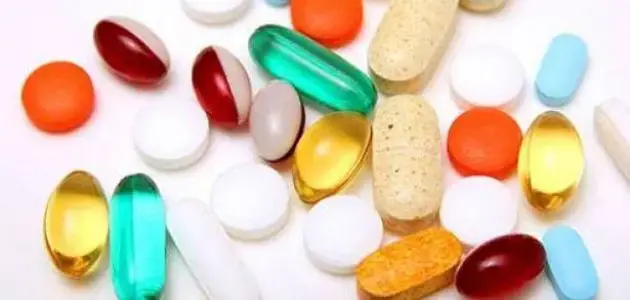Iron deficiency is often associated with anemia, and its symptoms can vary depending on the severity, how quickly it develops, the person's age, and their overall health. In many cases, iron deficiency anemia can be mild and initially go unnoticed. However, as iron levels continue to drop, more noticeable symptoms start to appear.
Common Symptoms of Iron Deficiency
1. Fatigue and Weakness
One of the most common signs of iron deficiency is persistent fatigue. This occurs because the body lacks enough hemoglobin—an iron-dependent protein that helps transport oxygen to muscles and tissues. Without adequate oxygen, energy levels decrease, leading to tiredness, mental fog, and reduced productivity.
2. Cold Hands and Feet
Inadequate oxygen circulation can also lead to cold extremities. Many people with iron deficiency report frequently feeling cold, especially in their hands and feet.
3. Shortness of Breath
Low iron means less hemoglobin and, consequently, lower oxygen delivery to muscles. Even mild exertion, such as walking, can leave a person short of breath as the body tries to compensate by increasing the respiratory rate.
4. Restless Legs Syndrome
This condition causes an uncontrollable urge to move the legs, often accompanied by unpleasant sensations. It can disrupt sleep and is commonly linked to iron deficiency.
5. Swollen or Sore Tongue and Mouth Issues
Iron deficiency can cause inflammation or swelling of the tongue. Cracks at the corners of the mouth are also common indicators of low iron levels.
6. Chest Pain or Irregular Heartbeat
When iron is low, the heart may have to work harder to deliver oxygen, potentially causing chest pain, tightness, or irregular heartbeats.
7. Dry Mouth
Iron deficiency may lead to atrophy of the tiny papillae on the tongue or reduced saliva production, resulting in a dry mouth.
8. Other Signs
Additional symptoms may include pale skin, frequent headaches, ringing in the ears, cravings for non-food substances (a condition known as pica), itchy skin, hair loss, difficulty swallowing, spoon-shaped or brittle nails, and dizziness.
Complications of Iron Deficiency
If left untreated, iron deficiency can lead to serious complications, including:
- Cardiovascular issues: Such as arrhythmia, heart murmurs, enlarged heart, or heart failure due to the extra effort the heart must exert to supply oxygen.
- Increased susceptibility to infections
- Developmental delays in children, including motor and cognitive delays
- Pregnancy complications: Such as preterm birth or low birth weight
- Worsening of chronic conditions and reduced treatment effectiveness
- Depression
Frequently Asked Questions About Iron Deficiency
Does Iron Deficiency Cause Headaches and Dizziness?
Yes. Low hemoglobin reduces oxygen delivery to the brain, which can lead to the dilation of blood vessels and result in headaches or dizziness—especially when standing up. Iron deficiency is also linked to migraines, particularly in menstruating women.
How Does Iron Deficiency Affect Skin, Hair, and Nails?
Pale Skin
Hemoglobin gives skin its pinkish tone. When levels drop, the skin becomes noticeably paler, particularly on the inner eyelids. Iron deficiency can also cause itching, rashes, or skin that bruises easily.
Hair Loss
While evidence is not conclusive, several studies have found a correlation between hair loss and low iron levels, especially in women experiencing androgenetic alopecia (female pattern hair loss).
Brittle Nails
Iron deficiency can weaken the nails, making them thin, cracked, or even spoon-shaped—a condition known as koilonychia.
Can Iron Deficiency Cause Anxiety?
Yes. A lack of oxygen supply to tissues can lead to symptoms of anxiety. Treating the deficiency often leads to noticeable improvements in mental well-being.
How Is Iron Deficiency Diagnosed?
Iron deficiency is usually identified through a combination of patient history, symptoms, and blood tests ordered by a physician. These tests assess hemoglobin levels, red blood cell count, and iron levels in the blood.
Overview of Iron Deficiency
Iron deficiency is one of the most widespread nutritional deficiencies globally. It occurs when the body doesn’t have enough iron, resulting in reduced production of red blood cells. Children, pregnant women, and women of reproductive age are particularly vulnerable.
Iron plays critical roles throughout the body. It helps carry oxygen from the lungs to tissues (via hemoglobin), stores oxygen in muscles (as myoglobin), and assists in cellular energy production (through cytochromes). Even a minor deficiency can disrupt these essential functions and lead to health complications.
The Link Between Iron Deficiency and Anemia
Iron deficiency can occur due to chronic blood loss, insufficient intake, or poor absorption. Normally, iron intake balances iron loss, but since oral iron absorption is limited, prolonged deficiency leads to anemia. This reduces red blood cell production and is the most common form of chronic anemia.
Leave a comment
Your email address will not be published. Required fields are marked *




